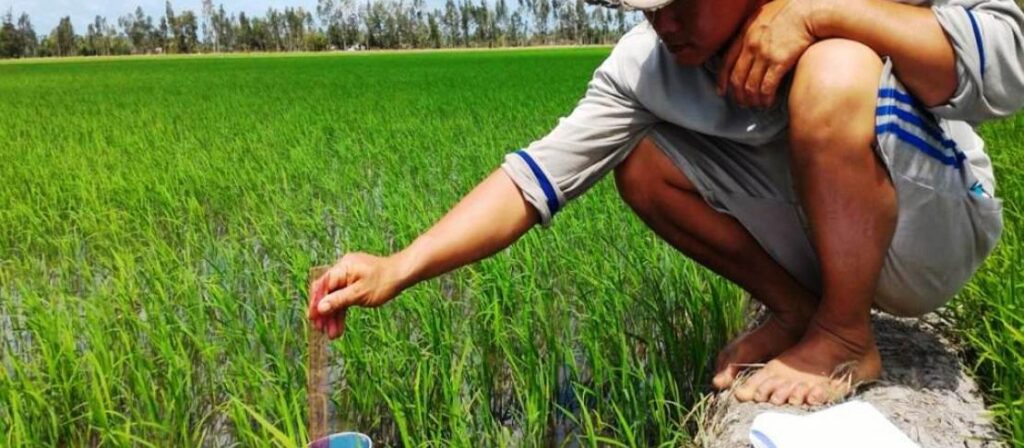Alternate Wetting and Drying can help revolutionize global rice farming
- From
-
Published on
12.02.25
- Impact Area

This water-conserving, emission-reducing, and cost-saving practice can help farmers, but challenges still remain for widespread adoption.
A new paper published in Nature Food by an international team of scientists proposes that an innovative rice irrigation methodology, known as Alternate Wetting and Drying (AWD), has significant potential to transform rice farming globally, contributing to enhanced water productivity while maintaining high yields.
The paper, ‘Improved alternate wetting and drying irrigation increases global water productivity’, was conducted by a team of researchers from Peking University, University of Exeter, University of California Davis, Potsdam Institute for Climate Impact Research, Yangzhou University, Columbia University, and the International Rice Research Institute. Analyzing data from over 1,100 field observations, the study found that strategic drying periods between irrigation cycles could save significant amounts of irrigation water without compromising rice production.
Related news
-

Bridging science, finance, and restoration: Insights from the sustainable beef investment roundtable
Multifunctional Landscapes Science Program17.11.25-
Climate adaptation & mitigation
Rome, 2–4 October 2025 — The Sustainable Beef Investment Roundtable brought together over 50 pa…
Read more -
-

COP30 Week 1: Negotiation Highlights and CGIAR Perspectives
Climate Action Science Program17.11.25-
Adaptation
-
Climate adaptation & mitigation
-
Mitigation
Week 1 of COP30 in Belém, Brazil – set against the backdrop of the Amazon…
Read more -
-

DTA at COP30: Why Digital Transformation Belongs at the Heart of Climate Action
Climate Action Science Program13.11.25-
Adaptation
-
Climate adaptation & mitigation
-
Mitigation
As the world gathers in Brazil for COP30, the conversations are once again focused on…
Read more -
